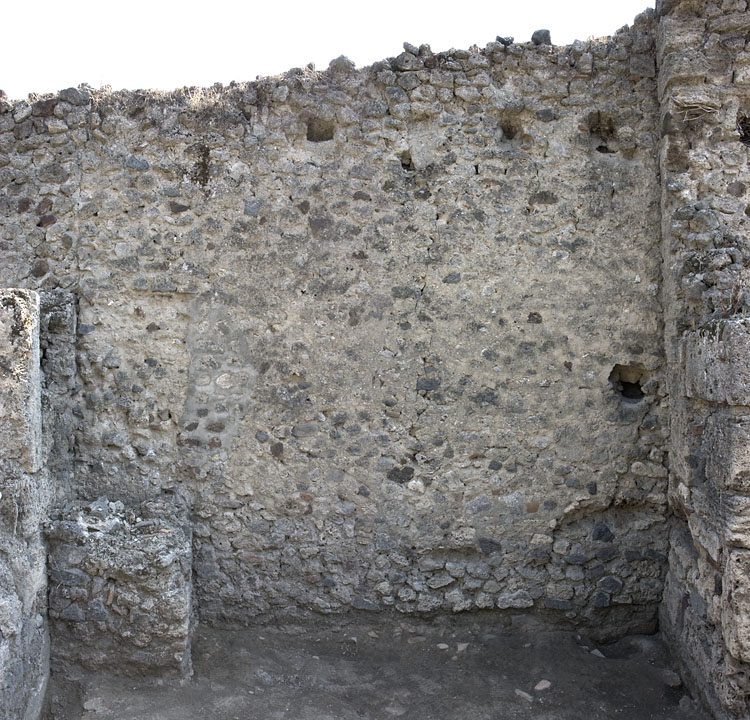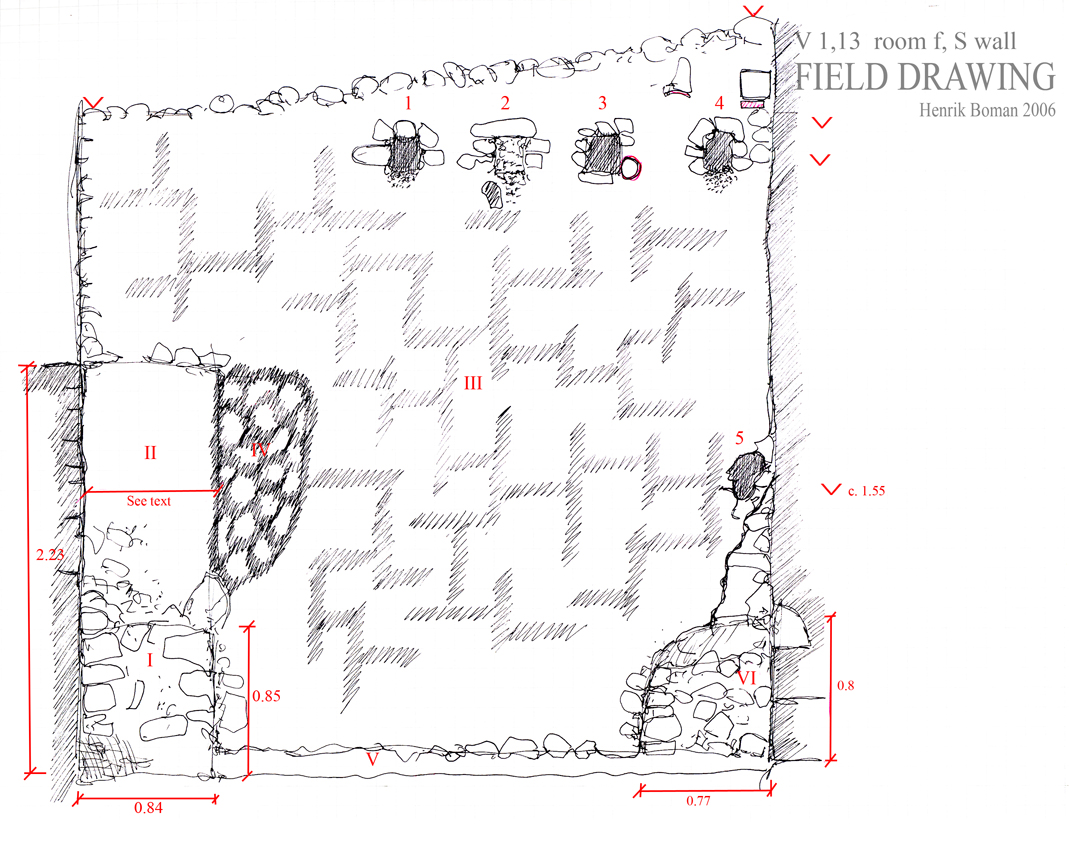South Wall
Description
Henrik Boman & Monika Nilsson
The wall is preserved to a significant height (kolla), with four beam holes, a filled in niche in the W corner, and the seconds support (B) for the table along the E wall.
The wall and the structures by the wall, are divided into six specific areas (I-VI): I: Square structure (A) in the SE corner, do not bound to the wall, interpreted as one of two supports for a table along the E wall. II) Area above the support (I), with the same width, running along the modern plaster area (IV). Of the same height as the E wall today. III) The major part of the wall, with large amounts of mortar which gives it a smooth appearance. IV) A surface along the W edge of (II) with modern plaster. V) The lower part of the wall. An edge marked in the wall, towards (IV) with also is visible in the W wall. VI) Niche, filled in.
I. The Bench/support (A)
Built abutting to E and S walls. There might be a hollow space in the corner. The construction consists of a majority of lava, one lime stone block in the corner facing the room. Various forms of terracotta used. Much overgrown by (mossa).
II. Area above support (I)
This area is of the same width as the support (0.8 m), and is 1.4 m high above the support. Despite the large amount of mortar is the surface uneven, and seem not to be constructed in the same manner as the rest of the wall. Floor spoils and cuma used, the floor spoils reminds of the ones found in the E wall in the Bakery.
III. The wall
The wall is constructed in opus incertum, with large amount of mortar still in situ in the surface, giving the wall a smooth appearance on almost the entire wall. In the lower and upper areas has the mortar eroded, and the stones are laid bare.
With the exception of the areas mentioned above (I, II, IV), and four beam holes, no other characteristica.
Material: A majority of lime stone, no larger blocks, cruma and lava present, though not in specific area. Brick/tiles, pottery, floor- and plaster spoils used.
Plaster: Some stones with plaster on them, though no continuous surfaces.
IV. Surface with modern plaster
The same masonry technique as in III, the area stretches to the same height as II, though not down to the height of the support (I). The modern plaster is (avfasad) and broken towards area (II)., as if it once adapted to an existing structure.
V. The lower part of the wall.
This area is filled with earth and in parts heavily overgrown. The construction seems to be the same as in (III) with the addition of the use of clay mortar, of the same type that we found in the bakery. The walls is retracted c. 0.03 m in the main section.
VI. The filled in Niche
The line in the masonry is visible that indicated a quarter section shaped niche, filled-in in present state, some what lower that the one in the W wall. A line in the masonry seems to define the niche down to the floor. A majority of lava used in the filling of the niche. There are no remains of plaster of other edges that signify an earlier appearance.
Beam holes (1-4)
Four beam holes placed at the same lava at …kolla m
The holes are swallow today, one of them are filled in with what seems to be modern material, corresponding to the material we observed in the cavities in room d. The stones around holes 2 & 4 seems to be cut in the upper region. However cuttings are not observable at the other sides of these holes, nor in any of the holes.
The beam holes do not have a specific beam hole structure, lime stones around the lining, only two of them cut, no larger stones are used in any of them except for the filled in hole (no. 2).
Beam hole 3: At the lower W corner there is a terracotta pipe, filled with mortar - presumably a spoil.
Hole 5
A single hole, at c. 1.55 m above the niche (VI). The hole has a lower rounded edge, in the upper edge, a stone seems to have fallen out; it is uncertain weather this hole corresponds to a intended structure.


